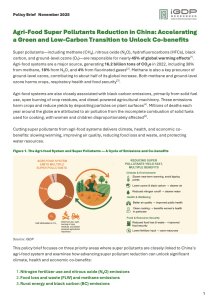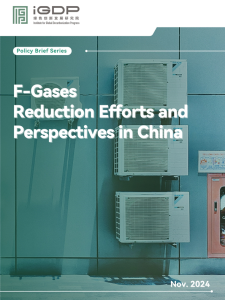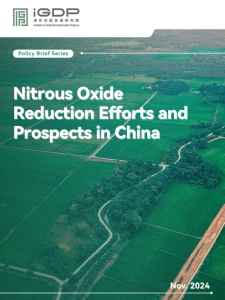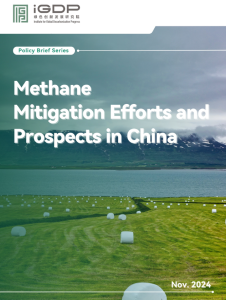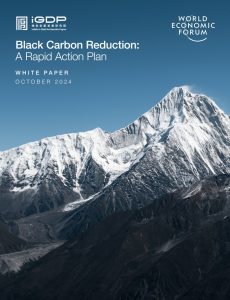Beyond Carbon

Our Actions:
- Methane, N₂O & F-gas Mitigation: Monitor methane and F-gas initiatives across sectors and regions to identify and scale cost-effective methane abatement and sustainable cooling practices.
- Non-CO₂ Mitigation in the Agri-Food System: Analyze emission trends and abatement potential to catalyze green, low-carbon transformation of the agri-food system.
- Climate Change and Air Quality Co-Control: Measure climate, environmental, and societal co-benefits of reducing SLCPs (e.g., black carbon, ground-level ozone) and advance cross-sectoral mitigation strategies.
- Non-CO₂ Mitigation Awareness Building: Establish knowledge-exchange platforms to increase policy visibility and foster global stakeholder collaboration on mitigation practices.
Publications
2025-11
Policy Brief
This policy brief examines the critical role of reducing super pollutants—specifically methane (CH₄), nitrous oxide (N₂O), and black carbon (BC)—from China’s agri-food system to unlock significant climate, health, and socio-economic co-benefits, focusing on three priority areas: optimizing nitrogen fertilizer use to cut N₂O emissions, reducing food loss and waste (FLW) to mitigate methane emissions, and transitioning rural energy sources and agricultural machinery to decrease black carbon emissions. It highlights practical solutions such as precision fertilization, sustainable cold chain development, and rural energy electrification, emphasizing their potential to lower greenhouse gas emissions, improve air quality, enhance food security, increase farmers’ incomes, and reduce premature deaths, while also outlining existing policy support, financial mechanisms, and the growing role of new agricultural entities in facilitating this green transition.
2025-11
Policy Brief
This policy brief provides an analysis of China’s agricultural methane emissions, which constitute the nation’s second-largest methane source. It outlines the significant mitigation potential within the sector, highlighting key trends and provincial-level actions. The brief identifies the top-emitting regions—Hunan, Sichuan, Inner Mongolia, Jiangxi, and Heilongjiang—and details the specific measures nine provinces are implementing, such as optimizing manure management and promoting low-emission rice cultivation. Furthermore, it showcases successful local pilot projects in Sichuan, Yunnan, and Jiangxi that demonstrate the multiple benefits of methane reduction, including climate, resource, and economic gain
2025-09
Report
The report contains our mapping of international and China’s existing domestic actions on non-CO₂ GHGs reductions and our recommendations on how China can strengthen its policy framework.
2025-06
Report
Low-carbon development in the agricultural production stage is vital to the green transition of China’s agri-food system. This report focuses on core production activities and presents case studies from major agricultural and pastoral regions across diverse climates and geographies.
Through these cases, we examine how local agriculture is responding to climate change, what drives the adoption of low-carbon practices, and what’s needed to scale them further. Based on this analysis and supporting literature, we offer recommendations to help stakeholders expand green practices and advance agri-food system transformation.
2024-11-14
Policy Brief Series
Fluorinated gases (F-Gases), including HFCs, PFCs, SF6, and NF3, although accounting for a very small proportion of the total GHG emissions, have an extremely high greenhouse effect. This iGDP policy brief summarizes China’s F-Gases emissions situation, policies, and opportunities for emissions reduction. It is showing that, with the strengthening of control in the future, China has the opportunity to achieve near-zero emissions of F-Gases, which will help realize the 2060 carbon neutrality goal.
2024-11-14
Policy Brief Series
Nitrous oxide (N2O) is a potent greenhouse gas with a significant warming effect, and its emissions are rising globally, largely due to human activities such as agriculture. Reducing N2O emissions is critical for mitigating climate change. This policy brief examines the current state and trends of China’s N2O emissions, outlines key mitigation measures, and explores the opportunities and challenges China faces in addressing N2O emissions within its broader climate strategy.
2024-11-13
Policy Brief Series
Beyond addressing climate change, reducing methane emissions can improve environmental quality, public health, and food security. Studies show that China’s methane emissions could remain high by 2050, posing challenges to its carbon neutrality goal. In this briefing, iGDP reviews recent international and Chinese policies related to methane reduction, highlights opportunities and challenges China faces in key sectors, and provides case studies and policy recommendations for effective emission reduction.
2024-10
White Paper
This white paper delves into the critical issue of black carbon (BC) and its profound impacts on climate and health. While the detrimental effects of ultra-fine black carbon, a key component of PM2.5, have been well-documented, the global response to mitigating its emissions has been notably lackluster. To uncover the reasons behind this inadequate policy action, the paper analyzes five national case studies—Brazil, China, India, Nigeria, and the United States—highlighting the primary obstacles to effective BC reduction.
Best Practices in Reducing Low-Concentration Coal Mine Gas Emissions in China
2024-05-31
Report
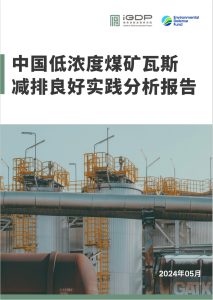
The Agri-Food System and Carbon Neutrality
2023-11-30
Report
To strengthen China’s response to global climate change and achieve the long-term goal of carbon neutrality, it is necessary to have a clear understanding of its agri-food system’s emissions and reduction possibilities. This report estimates China’s agri-food system GHG emissions by source and type, examines existing and new potential reduction efforts, and outlines key pathways and priority measures to achieve carbon neutrality in the agri-food system.
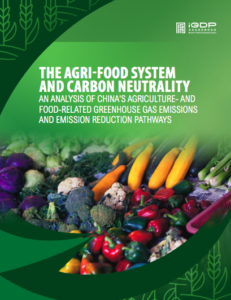
Policy Briefs
iGDP has released six policy briefs on mitigation of non-CO2 emissions in China. These policy briefs describe the current status of China’s key non-CO2 emitting sectors, characterizing their emissions and offering policy suggestions.

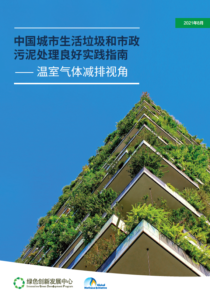
Research on China’s Non-CO2 Greenhouse Gas Emission Reduction Action
Dissemination of China’s Green Refrigeration Achievements

